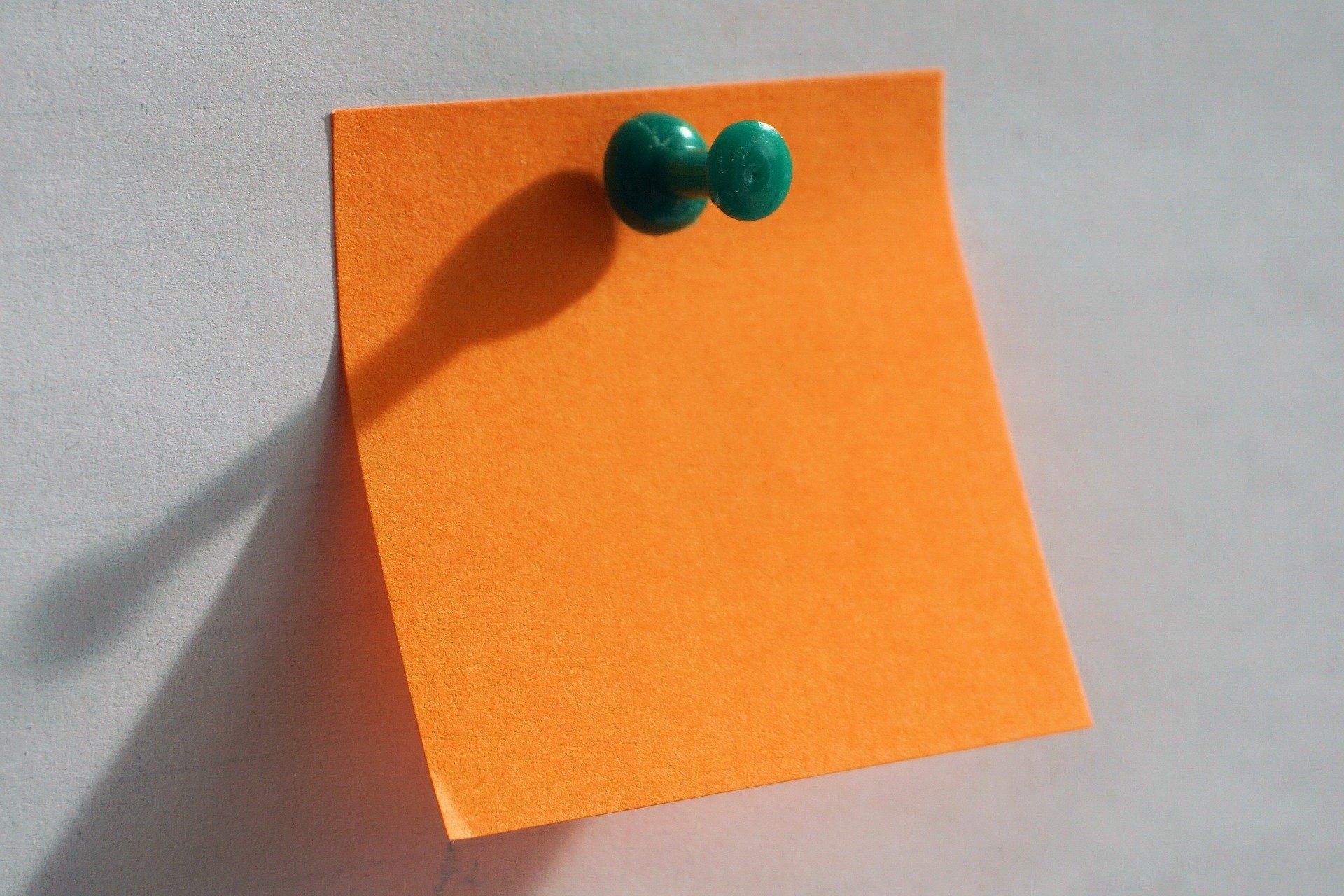Discover our online courses
Articles

Affirmations are phrases that are either repeated or posted in prominent places for the user to see. Sometimes they are just trite positive sayings, but other times they are a significant goal that is personal to the user. They are meant to be encouraging. Affirmations can be useful when used correctly, but most often they are just wishful thinking. You can write “I am a marathon runner” on sticky notes and put them up all over your home, but that will not make you a marathon runner. It will not strengthen your legs, your lungs, or your endurance. But there are four ways that affirmations can be useful. Affirmations can open your mind to the possibility of achieving your goal Affirmations can help you visualize your goal Affirmations can remind you of your goal Affirmations can motivate you to work towards your goal Many affirmations will have all four of these elements. Others may only have some, or have all the elements but have a strong emphasis on one element. Your affirmations should emphasize the aspects that will help you the most.

Imagery, or visualization training, is a powerful tool to help you improve your performance. Imagery is not just daydreaming; it is careful and controlled mental rehearsal. While daydreaming involves imagery, you can also deliberately practice with it. With imagery, you visualize yourself performing successfully with many repetitions in great detail. Imagery can be used in many different ways: 1. To practice skills and reinforce learning : As you write in your training journal after practices or competitions, visualize what you did to reinforce it. As you go to sleep at night, use imagery to review what you worked on that day. 2. To g et used to performing : Athletes use imagery to see themselves competing, starting from arrival at the competition through the end of the day. Include warming up, feeling your adrenaline, feeling your nerves, settling your nerves, competing hard, and seeing the results of your success. In your professional life, you might see yourself entering a room full of people, walking confidently to the front of the room, giving your presentation, and answering questions calmly and knowledgeably. Musicians can see themselves walking on stage, settling in to their instrument, feeling the music and playing better than ever before. 3. To adjust energy levels: Using different imagery can calm you down or get you going. To adjust energy level upwards, one of my students liked to imagine stoking the fire in a steam engine train. When I was competing, I would visualize a sort of wishing well beside me that was filled with liquid energy, the color and texture of honey, that I could dip into with my hand whenever I needed more. Others like to visualize an enormous ocean wave crashing against the shore, an erupting volcano, or anything powerful. To calm down, you can think of a relaxing place. Perhaps you are lying on a fluffy white towel on the warm sand at the beach. You feel the warmth of the sunshine on your body. A palm tree sways lightly in the gentle breeze nearby. The sky is clear and a beautiful shade of blue. You hear the waves lapping gently on the shore and smell the fresh, ocean air. 4. To get the mind ready during pre-performance time: Use imagery to see what you intend to do that day – see yourself competing or performing well. Fencers might see themselves scoring great touches, controlling the distance, controlling the bout – anything that is particularly important for you to focus on that day. Musicians might see themselves controlling their breathing, the shape of their phrases, moving their fingers with agility, maintaining their tempo, or whatever they feel it is most important to focus on when they perform. 5. To refocus Part of refocusing after something goes wrong is to see yourself executing the action successfully. Imagery can help you let go of what just happened and set you on the right path for what comes next. 6. To practice when it’s not physically possible: Maybe you are traveling, injured, or ill and cannot train normally. Or maybe you need a training partner and nobody else shows up that day. Or maybe you are the best in your region and you need to train against tougher opponents. When you do imagery well, you are just under the level of actually firing the muscles, and you are getting much of the benefits of actually performing the actions. 7. To motivate by seeing images of goals and by seeing success : When you feel like you’re in a slump, or just not making the progress you want, or you’re tired of working so hard every day, it helps to motivate yourself by using imagery to feel what achieving your goal will be like. How will it feel to shake hands and see the respect in the eyes of your opponent? How will it feel to hear your teammates cheering wildly or to hear you coach tell you how much your hard work has paid off? How will it feel to be on that medal stand? These images can help motivate you to keep working hard. Let’s face it, not all training is fun if your goals are lofty.

We communicate to ourselves all the time. We analyze, we respond or react, we express our feelings to ourselves with our thoughts. We do a lot of self-talk – up to 300 words per minute. Much is normal thoughts – “I’ll do the laundry when I get home” or “I need to answer that e-mail” or “I should call my mother.” But there is a lot of negative self-talk – both obvious criticisms “I’m terrible at this” or the less obvious “I never know what to do” or “I’m nervous when I perform” or “I panic at critical moments.” Negative self-talk affects our confidence and our self-image. If your self-image is one of incompetence, inferiority, anxiety, or failure, you are not likely to produce a stellar performance, and you will lack confidence. Proper self-talk will help both your overall confidence and your performance. Self-talk should be either positive or constructive. We easily yell at ourselves for mistakes, but when was the last time you told yourself you did something well right after you did it? At the end of the day, we tend to dwell on our mistakes, but instead we should pay more attention to the things we do right. Reminding yourself regularly of what you’ve done well helps boost your self-image and confidence. Self-talk is often negative. What do you say to yourself now if something goes wrong? If you are like most people, you yell at yourself in ways you would never speak to anyone else. You might call yourself names, put yourself down, and reinforce that you “can’t” do it. Maybe you allow yourself to get frustrated, and start rushing, using poor technique and basically throwing away your abilities in order to match your self-image of failure. Negative thoughts prevent you from performing well. In sports, they serve no one but your opponent. Positive self-talk is key. There should be no name-calling, or putting yourself down. Treat yourself as you would a little, vulnerable child. If he made a mistake, would you chew him out? Or would you tell him it’s okay, and help him find a way to do it better?

Nervousness and tension come primarily from two things: perceived importance and uncertainty of the outcome . Perceived importance is how important the outcome is to you. Back when I was a collegiate fencer, I would get terribly nervous before any dual meet. Since my team wasn’t very strong, I knew that if I didn’t win all of my bouts, my team would probably lose. I felt the pressure of needing success for both myself and my team. When I started competing in local United States Fencing Association competitions, I still felt a lot of pressure. Later, as a world cup competitor, I considered local tournaments just part of my training, and wouldn’t be nervous at them. The importance that you personally give an event is the perceived importance. The same event may be a big deal for one competitor and not at all important for someone else. If you are playing against a six-year old in practice, you probably don’t perceive the outcome as important (you might even let the little guy win) and you have no uncertainty of the outcome - you either beat him or let him win, but you know it’s up to you. Likewise, if you are competing against the world champion, given your current skill level, you have a pretty clear idea of the probable outcome, so you don’t get so tense and just enjoy the experience while admiring your opponent’s skill. But what happens when you are competing against someone who is your equal? Now the outcome is uncertain. And now, how does it feel when you know that you have to win this in order to qualify for nationals? Or to achieve whatever your goal is? The importance level rises. Significantly. So now you have both uncertainty of the outcome and a high perceived importance, and suddenly you are feeling a lot of tension. You need relaxation training. What will relaxation training do? It relieves stress, and trains you to be able to reduce your stress during times of great pressure. Relaxation training helps you use your conscious mind to control the state of your muscles, so your body can perform its best. Tension flows between the body and the brain; when your muscles are relaxed, your mind can be more relaxed and think clearly. There are many methods of relaxation training. My personal favorite is progressive relaxation training, because I have found it to be the most effective for my students. In progressive relaxation training, you tense and relax muscles systematically, training them to respond to a cue word. The muscles learn what they should feel like when you tell them to be relaxed with your cue word. In this case we will use the word “loose”. (I don’t recommend using the word “relax” because we tend to associate it more with tension than with real relaxation.) If you do this on your own, you can choose whatever cue word your mind associates with true relaxation. How do you do progressive relaxation training ? You will tense various muscles and then relax them when you say your cue word. This trains the muscles to go to a truly relaxed state when you hear your cue word. Tighten the muscles, but don’t put yourself in agony. Tense and release each muscle segment twice before moving on to the next.

What do you want to achieve ? In sports, outcome goals are things like “I want to win a local tournament this season,” or “I want to make the US team.” In life, they can be things like “I want to get promoted” or “I want to perform flawlessly at my next concert” or “I want to make the honor roll at school.” Outcome goals are rarely entirely within your control, so they can be a little scary to set. You may want to win a local tournament, but if the Olympic team shows up that day, you likely won’t make that goal. However, an outcome goal needs to be a goal, not a given. Something that will not be easy to achieve. The main purpose of an outcome goal is to motivate you to work hard at your proficiency and your training goals.

Affirmations are phrases that are either repeated or posted in prominent places for the user to see. Sometimes they are just trite positive sayings, but other times they are a significant goal that is personal to the user. They are meant to be encouraging. Affirmations can be useful when used correctly, but most often they are just wishful thinking. You can write “I am a marathon runner” on sticky notes and put them up all over your home, but that will not make you a marathon runner. It will not strengthen your legs, your lungs, or your endurance. But there are four ways that affirmations can be useful. Affirmations can open your mind to the possibility of achieving your goal Affirmations can help you visualize your goal Affirmations can remind you of your goal Affirmations can motivate you to work towards your goal Many affirmations will have all four of these elements. Others may only have some, or have all the elements but have a strong emphasis on one element. Your affirmations should emphasize the aspects that will help you the most.

Imagery, or visualization training, is a powerful tool to help you improve your performance. Imagery is not just daydreaming; it is careful and controlled mental rehearsal. While daydreaming involves imagery, you can also deliberately practice with it. With imagery, you visualize yourself performing successfully with many repetitions in great detail. Imagery can be used in many different ways: 1. To practice skills and reinforce learning : As you write in your training journal after practices or competitions, visualize what you did to reinforce it. As you go to sleep at night, use imagery to review what you worked on that day. 2. To g et used to performing : Athletes use imagery to see themselves competing, starting from arrival at the competition through the end of the day. Include warming up, feeling your adrenaline, feeling your nerves, settling your nerves, competing hard, and seeing the results of your success. In your professional life, you might see yourself entering a room full of people, walking confidently to the front of the room, giving your presentation, and answering questions calmly and knowledgeably. Musicians can see themselves walking on stage, settling in to their instrument, feeling the music and playing better than ever before. 3. To adjust energy levels: Using different imagery can calm you down or get you going. To adjust energy level upwards, one of my students liked to imagine stoking the fire in a steam engine train. When I was competing, I would visualize a sort of wishing well beside me that was filled with liquid energy, the color and texture of honey, that I could dip into with my hand whenever I needed more. Others like to visualize an enormous ocean wave crashing against the shore, an erupting volcano, or anything powerful. To calm down, you can think of a relaxing place. Perhaps you are lying on a fluffy white towel on the warm sand at the beach. You feel the warmth of the sunshine on your body. A palm tree sways lightly in the gentle breeze nearby. The sky is clear and a beautiful shade of blue. You hear the waves lapping gently on the shore and smell the fresh, ocean air. 4. To get the mind ready during pre-performance time: Use imagery to see what you intend to do that day – see yourself competing or performing well. Fencers might see themselves scoring great touches, controlling the distance, controlling the bout – anything that is particularly important for you to focus on that day. Musicians might see themselves controlling their breathing, the shape of their phrases, moving their fingers with agility, maintaining their tempo, or whatever they feel it is most important to focus on when they perform. 5. To refocus Part of refocusing after something goes wrong is to see yourself executing the action successfully. Imagery can help you let go of what just happened and set you on the right path for what comes next. 6. To practice when it’s not physically possible: Maybe you are traveling, injured, or ill and cannot train normally. Or maybe you need a training partner and nobody else shows up that day. Or maybe you are the best in your region and you need to train against tougher opponents. When you do imagery well, you are just under the level of actually firing the muscles, and you are getting much of the benefits of actually performing the actions. 7. To motivate by seeing images of goals and by seeing success : When you feel like you’re in a slump, or just not making the progress you want, or you’re tired of working so hard every day, it helps to motivate yourself by using imagery to feel what achieving your goal will be like. How will it feel to shake hands and see the respect in the eyes of your opponent? How will it feel to hear your teammates cheering wildly or to hear you coach tell you how much your hard work has paid off? How will it feel to be on that medal stand? These images can help motivate you to keep working hard. Let’s face it, not all training is fun if your goals are lofty.

We communicate to ourselves all the time. We analyze, we respond or react, we express our feelings to ourselves with our thoughts. We do a lot of self-talk – up to 300 words per minute. Much is normal thoughts – “I’ll do the laundry when I get home” or “I need to answer that e-mail” or “I should call my mother.” But there is a lot of negative self-talk – both obvious criticisms “I’m terrible at this” or the less obvious “I never know what to do” or “I’m nervous when I perform” or “I panic at critical moments.” Negative self-talk affects our confidence and our self-image. If your self-image is one of incompetence, inferiority, anxiety, or failure, you are not likely to produce a stellar performance, and you will lack confidence. Proper self-talk will help both your overall confidence and your performance. Self-talk should be either positive or constructive. We easily yell at ourselves for mistakes, but when was the last time you told yourself you did something well right after you did it? At the end of the day, we tend to dwell on our mistakes, but instead we should pay more attention to the things we do right. Reminding yourself regularly of what you’ve done well helps boost your self-image and confidence. Self-talk is often negative. What do you say to yourself now if something goes wrong? If you are like most people, you yell at yourself in ways you would never speak to anyone else. You might call yourself names, put yourself down, and reinforce that you “can’t” do it. Maybe you allow yourself to get frustrated, and start rushing, using poor technique and basically throwing away your abilities in order to match your self-image of failure. Negative thoughts prevent you from performing well. In sports, they serve no one but your opponent. Positive self-talk is key. There should be no name-calling, or putting yourself down. Treat yourself as you would a little, vulnerable child. If he made a mistake, would you chew him out? Or would you tell him it’s okay, and help him find a way to do it better?
